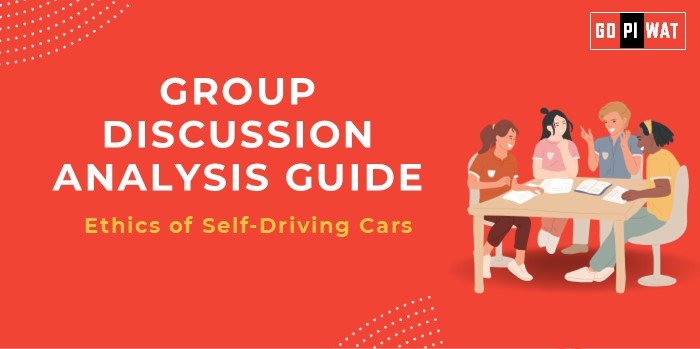📋 Group Discussion (GD) Analysis Guide: Ethics of Self-Driving Cars – Passengers vs. Pedestrians
🌐 Introduction to the Topic
Context:
The rise of autonomous vehicles has ignited debates on moral decision-making algorithms, especially when human lives are at stake. Should these systems prioritize passenger safety over pedestrian welfare?
Background:
With advances in AI and robotics, self-driving cars are becoming a reality. Ethical programming is critical as these vehicles will inevitably face moral dilemmas, such as “The Trolley Problem,” where the choice is between saving passengers or pedestrians.
📊 Quick Facts and Key Statistics
- 🚗 Autonomous Vehicle Market Size: Valued at $76 billion in 2023, expected to grow by 23.5% CAGR.
- ⚠️ Global Road Accident Deaths: 1.3 million annually; 94% caused by human error.
- 🚶 Pedestrian Deaths: 280,000 globally (WHO 2022), highlighting the need for safety prioritization for all.
- 📊 Ethical Survey: 76% of individuals prefer prioritizing many lives over few, even if it sacrifices passengers.
🧩 Stakeholders and Their Roles
- 🏛️ Governments: Establish regulations, ethical frameworks, and safety standards.
- 🔬 Tech Companies: Develop AI algorithms that align with ethical guidelines.
- 👥 Citizens: Public opinions shape laws and consumer preferences.
- 💼 Insurance Companies: Determine liability and risk policies for incidents involving self-driving cars.
🏆 Achievements and Challenges
✨ Achievements:
- 🚦 94% Reduction: Human-error-related accidents reduced in test scenarios.
- 🌐 Global Collaborations: Ethical AI guidelines developed (e.g., Asilomar AI Principles).
⚠️ Challenges:
- ⚖️ Lack of Universal Standards: No global consensus on ethical programming.
- 📉 Bias in Algorithms: Reflect societal inequalities.
- ❓ Legal Uncertainties: Liability issues remain unresolved.
🌎 Global Comparisons:
- 🇩🇪 Germany: Enacted ethical guidelines prioritizing human life over property.
- 🇺🇸 US: Prioritizes economic growth, emphasizing faster deployment over ethical alignment.
💬 Structured Arguments for Discussion
- Supporting Stance: “Self-driving cars should prioritize passenger safety as they purchase the vehicle and assume calculated risks.”
- Opposing Stance: “Public safety must come first; protecting pedestrians reduces overall harm in society.”
- Balanced Perspective: “Algorithms must aim to minimize overall harm, with decision-making varying by context.”
📚 Effective Discussion Approaches
Opening Approaches:
- 📈 Statistical Insight: “Autonomous vehicles have reduced accidents by 94%, but can we program ethics effectively for moral dilemmas?”
- 💡 Philosophical Angle: “The ‘Trolley Problem’ in real-world AI is no longer theoretical; it’s programming reality today.”
Counter-Argument Handling:
- ✔️ Cite global guidelines or case studies like Germany’s legal framework.
- 📊 Address biases in existing AI and propose solutions.
📈 Strategic Analysis of Strengths and Weaknesses
- ✔️ Strengths: Reduces human-error accidents, constant vigilance, data-driven decisions.
- ❌ Weaknesses: Lack of accountability, bias in algorithms, societal mistrust.
- 💡 Opportunities: AI ethics research, international collaboration, smarter urban designs.
- ⚠️ Threats: Misuse of AI, cyberattacks, public backlash.
🏫 Connecting with B-School Applications
Real-World Applications:
- 🌍 Exploring AI governance models.
- 📚 Ethical programming case studies.
Sample Interview Questions:
- ❓ “How can ethical AI in self-driving cars influence public trust?”
- ❓ “What role should governments play in regulating autonomous vehicle ethics?”
Insights for B-School Students:
- 💼 Policy analysis, risk management, and technology ethics will be critical in future business contexts.


